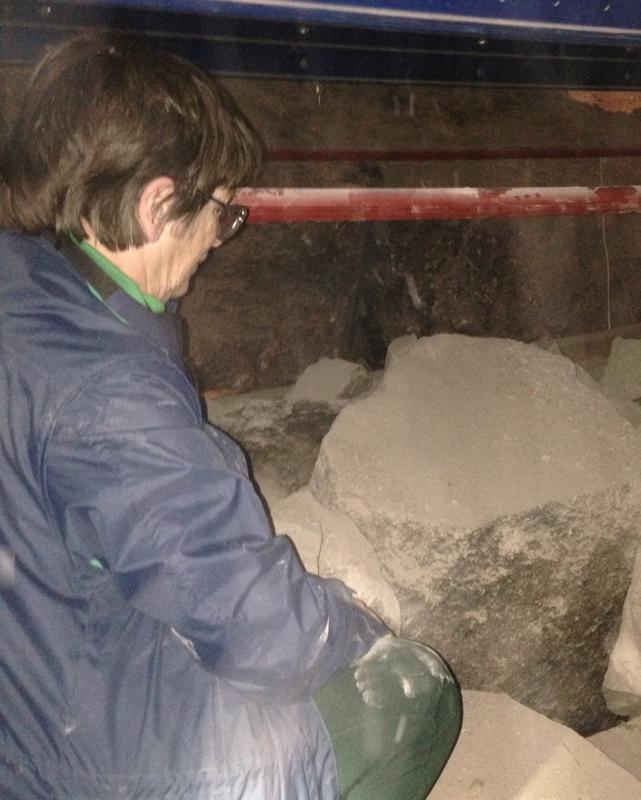February 13, 2013
by Egyptologist Stephen Harvey

Day 4: Wednesday, February 6.
Our plan for a morning visit to the Egyptian Museum, located in the now globally famous Tahrir Square, has been on my mind for weeks prior to the departure of this trip. Even the smallest chance of any disturbances in the area would prevent our visiting the treasures located in the museum. Through careful AIA Tours planning, and as a great benefit of our “behind the scenes” special access, the museum was opened to our group exclusively at 7 AM, two hours before the public opening.
We all felt quite special as the museum staff opened the ornate, early 20th century iron gates of the museum just for us, ushering us into the entirely empty museum garden. For professional Egyptologists, the chance to have the museum to ourselves is a dream come true, and so Mahmoud and I worked hard in advance to decide how best to take advantage of this chance for our group. We chose to start with what is usually the most crowded place in the museum: the small room housing the gold mask of King Tutankhamun, as well as the other golden treasures from his spectacular tomb. Room after room, we were able to take our time to reflect, look closely, discuss, and listen – a privilege not usually possible in the midst of the bustle of an ordinary visit. Even with the relatively low numbers of travelers in Egypt right now, we certainly appreciated our special visit all the more after 9 AM, when large numbers of people started flowing in to the museum, enabling us to then choose more obscure rooms for the remainder of our morning.
After a blissfully rapid drive out of downtown Cairo (not always the case!), we reached the palm groves of Saqqara and enjoyed another lovely outdoor lunch, this time at the Saqqara Palm Club, which retains its countryside feel. Nothing could prepare any of us for the remarkable experience ahead of us: a visit inside, and deep down into descending shaft, of the Step Pyramid of King Djoser, where we stood directly atop the granite roofing blocks of the king’s burial chamber. If you were to describe this visit to most professional Egyptologists, you would be greeted with a jaw dropped entirely open – “how was this visit possible?” they would ask! Indeed, for many years, even with this very AIA tour, which includes a visit to the interior of the Step Pyramid, we could only stand at the edge of the truly terrifying descending square shaft of the tomb, and could only look up at the disconcerting mass of small blocks of the pyramid’s mass above, supported only by a few ancient wooden beams! Now, however, thanks to the wise intervention of the Ministry of Antiquities, the Step Pyramid is receiving conservation inside and out, and the entire interior shaft of the pyramid is filled with a sturdy modern scaffolding as specialists secure the stones above, as well as the bedrock below, all the way down to the extensive passages surrounding the king’s burial. Last year our AIA group was only invited to inspect the attempts by British engineering specialists to inflate support balloons to help shore up the pyramid from below. This year, though, thanks to the kind inspector from the Ministry accompanying our tour, we were invited to walk down the endless descending staircases until we reached the sarcophagus itself! Many of us who work in tourism like to occasionally overstate the case and call some visit or other the “chance of a lifetime,” but I certainly could enthusiastically tell our group that this visit was indeed such a thing – soon, this scaffolding will be removed, and it will never again be possible to visit the king’s burial chamber without rappelling down the sheer walls of the tomb shaft, or otherwise lowering oneself – something that in any case will most likely not be permitted for any but the most dedicated researchers. This was a day and a visit I won’t soon forget, and I think that my excitement must have carried over to the rest of our AIA group as well.
[Click to view our full AIA Tours Behind the Scenes in Ancient Egypt itinerary.]